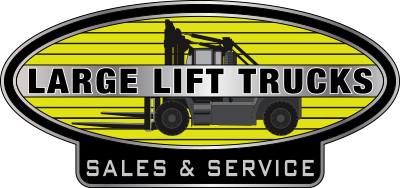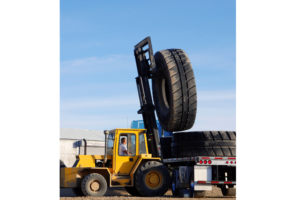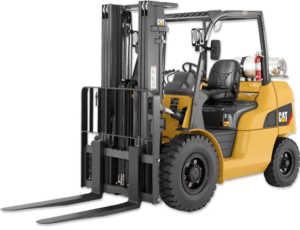How Often Should Forklifts Be Inspected
According to OSHA regulations, forklifts should be inspected every day or before beginning each shift if they are in continuous use. In addition to the daily or shift-based inspection, a documented annual inspection done by a third-party contractor is required.
Any defects identified during an inspection are reported and resolved, and until then, the forklift is removed from usage. All inspections should be documented to make sure they are compliant with OSHA regulations. In this blog, let’s discuss why you should inspect forklifts, what are the inspection requirements, and the inspection checklist.
Why you should inspect forklifts?
If you fail to inspect the forklift regularly, it may result in injury, property damage, accidents, and also in fines. Avoiding inspections will result in unidentified problems like damaged parts or any engine failure will increase the possibility of accidents and forklift downtime.
Here are some of the potential dangers if you fail to perform regular inspections:
Safety issues
- Uninspected forklifts have hidden defects that may result in accidents and injuries to workers and operators.
- Avoiding daily inspection is violating OSHA regulations which will result in fines and legal problems.
- Some serious injuries from not inspecting forklifts are pinned, struck in the forklift, falling from the forklift, or crushed by the forklift.
- Forklift accidents are a common reason for workplace casualties resulting in fatal injuries for about 100 workers annually.
Financial Impacts
- Forklifts that are not inspected or maintained will result in expensive downtime, breakdowns, and also reduce productivity.
- Forklifts that are not inspected may have faulty brakes, steering, or other damaged equipment which will cause damage to the property like pallets, walls, or other machinery.
- Ignoring small wear or tear in the early stage may end up in expensive repairs.
- Avoiding inspection will damage the forklift and shorten its lifetime.
Environment factors
- Forklifts that are not maintained properly will put the workplace in danger, affect employee morale, and reduce productivity.
- If daily inspection is not imposed, it will become a practice among operators and they will also ignore safety practices.
Forklift inspection checklist
Operational Safety and Health Administration or OSHA regulated daily or after each shift inspection if the forklift is used regularly or throughout the day. The inspection ensures it is safe to operate and does not cause any harm to the operator, other workers, surroundings, and the forklift itself. This inspection will include checking fluid leakage, damage, and overall functioning of all controls and safety features.
Below are the areas to be checked in regular forklift inspection
- Overall condition: Check for overall damage such as cracks, dents, or broken components.
- Check fuel level: Ensure fuel levels are within safe range and there is no fuel leakage. Fuel levels include engine oil, coolant, hydraulic fluid, and diesel.
- Check Tire: Check the tires for any damage and sufficient air pressure.
- Check Forks: Check the forks for any bends or cracks and make sure it is secured and in good condition.
- Check safety components: Check safety components like lights, alarms, seatbelts, and brakes are functioning properly.
- Check controls: Ensure steering, lift mechanisms, and brakes are working properly.
- Check overhead guard: Check overhead guard for damage or uncertainty.
- Check nameplates: Ensure nameplates and safety decals are visible and legible.
- Check operator cabin: Check operator cabin is clean and all operator manuals are available and working fine.
- Check hydraulic hoses: Make sure the hydraulic hoses are not crimped, loose, or rubbing and are connected properly.
- Check mast chain tension: Make Sure the mast chain tension is sufficient.
- Check fire extinguisher: Ensure fire extinguisher is working and readily available.
- Check horn: Check the horn is loud and working.
- Check light: Make sure the lights are functioning properly.
- Check backup alarm: If the backup alarm is equipped, make sure it is functioning properly.
- Check engine: Check engine for unusual vibrations or noise.
- Check hour meter: Make sure the hour meter is working and able to track forklift usage.
- Check the battery: Make sure the battery is working fine by checking battery connections, battery hold-downs, and electrolyte levels.
Even Though OSHA does not require any formal documentation for forklift inspection, it is good to use a checklist to make sure all essential components and features are regularly inspected and submit evidence to OSHA inspectors.
OSHA pre-operational inspections
- OSHA mandates that all forklifts should be inspected before starting of every shift.
- Operators have to conduct pre-start visual check and operational check with the key off and engine running.
- Check for tire condition, fuel leaks, damages, and other potential dangers.
- Do not operate the forklift that requires maintenance until it is repaired.
If you want to perform a professional forklift inspection, contact our expert today.
Large lift trucks provide all top brands of new and used forklifts and their components sales, rental, and services. Our experts will understand your requirements and material handling needs and provide the right forklift for your industry. We also provide regular forklift inspection, contact our technician today.
FAQs about Forklifts Inspection
How often do you inspect forklifts?
Based on OSHA regulations, forklifts are inspected daily or before beginning each shift if they are in regular use.
Why do you inspect forklifts?
Inspecting forklifts will avoid injury, property damage, downtime, engine failure, accidents, and fines.




